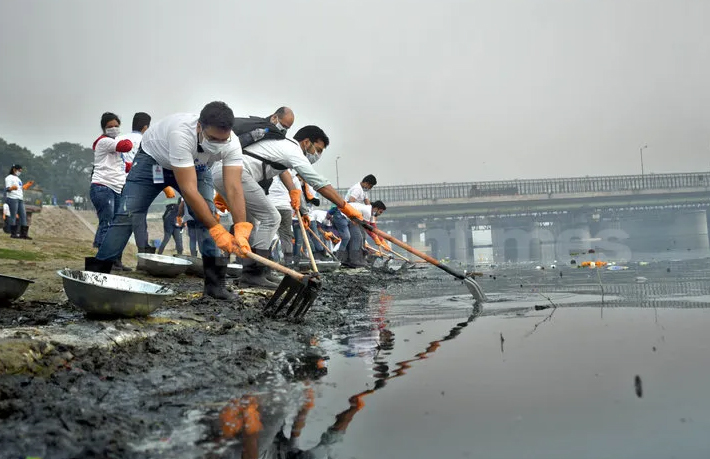Steps Taken to Clean the Yamuna River:
India is country of Holy rivers and Yamuna is one of them. But due to some reasons Indians and the Government of India making it the most polluted river in India. The Yamuna River, one of India's most polluted river, faces severe pollution challenges due to unfiltered Human and Factory wastes. Here are the current initiatives and proposals to clean this river:

Current Initiatives:
1. Four-Pronged Strategy:
⦿ Removal of Solid Waste and Silt: Using machineries like trash skimmers, weed harvesters, and dredge utility crafts to clear the riverbed. But it will be more efficient if this process continues regularly under a conscious and responsible committee.
⦿ Cleaning Major Drains: Focusing on many drains like, Najafgarh and Supplementary drains to prevent untreated sewage from entering the river. If this waste are filtered after entering the river, the range of pollution can be decreased at a certain level.
⦿ Monitoring and Enhancing STPs: Regular checks on existing sewage treatment plants (STPs) and plans to build new ones to meet the shortfall in treating wastewater. But it will be efficient if the above plans are done honestely.
⦿ Industrial Effluent Management: Cracking down on industrial units releasing untreated effluents into drains. This reason is the 50% of the main pollution in the river Yamuna. If the dangerous chemical and non-chemical wastes are continuously thrown to this river, it will made it a hell after some days.
2. In-Situ Treatment Zones:
⦿ Creating zones in major drains with floating booms, weirs, aeration devices, and floating wetlands to reduce pollutants. It plays a major role on controlling the range and identifiaction of pollution.
3. Chemical Dosing:
⦿ Reducing phosphate content in wastewater through targeted chemical dosing to minimize foaming. But it will not help to reduce the pollution totally.
◎ Proposed steps for further Improvements:
1. Enhanced STP Capacity: Increasing the capacity of existing STPs and constructing decentralized STPs to treat more wastewater effectively. This can reduce it at some levels.
2. promote Organic Farming: Encouraging organic farming practices near the Yamuna to reduce fertilizer runoff and soil contamination. But the water will be not usable after a few times.
3. Solid Waste Management: Improving waste processing capacity and installing screens on drains to prevent solid waste from entering the river. It will help to prevent solid waste to capture the river surface.
4. Interstate Coordination: Implementing a comprehensive interstate approach to address pollution sources across all states through which the Yamuna flows. The Goverment has achived a big 0 in this.
5. Public awareness and Participation: Engaging local communities through awareness campaigns to prevent littering and support river conservation efforts. But the public are also helpless without government support. Through some Government initiatives public can play a huge role in this.
Now, Government should take some action on this and with public co-operation give the river a new life.

